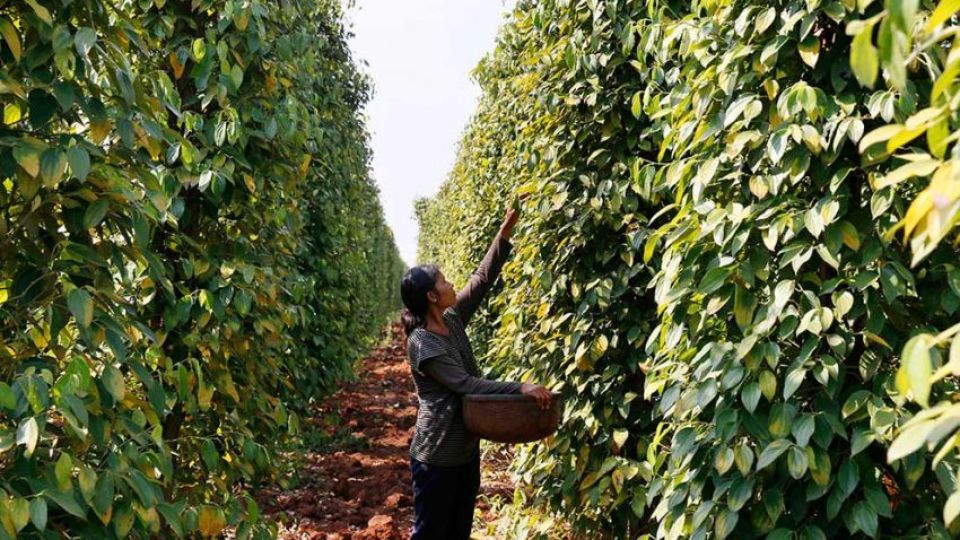June 28, 2022
PHNOM PENH – Cambodia’s peppercorn output this year could rise by around one-tenth over 2021, industry insiders have reported, as the harvest season reaches more than 90 per cent completion.
Each year, the fruit of the Piper nigrum, a flowering vine considered to be native to the southwestern Indian coast, is typically harvested exclusively by hand between January and June, and generally wraps up when the southwest monsoon brings the rainy season from mid-May.
Among the varieties cultivated in the Kingdom, Kampot pepper is the most highly-prized, grown in the namesake coastal province, and remains the sole cultivar protected under national geographical indication (GI).
Unseasonal heavy rains in February, March and April have pushed up yields of the GI-tagged peppercorn by about 10 per cent this year, compared to 2021, and greatly cut down on fuel costs for irrigation, Kampot Pepper Promotion Association (KPPA) president Nguon Lay told The Post on June 27.
With virtually all pepper production from small- and medium-sized vineyards reserved by traders, and based on purchasing contracts struck by KPPA members, Lay predicts that exports in 2022 will top last year’s 114 tonnes, out of the 125 tonnes harvested.
Lay defined small-sized vineyards as those with 100-1,500 vines, and medium-sized as those with 1,500-3,000. Large-sized vineyards contain more than 3,000. On average, about 2,500 vines can be grown per hectare, he said.
The per-kilogramme prices for Kampot pepper have remained the same for “six or seven years”, at $15 for black, $25 for red and $28 for white, he said, explaining that the peppercorn turns red when left on the vine for another 25-60 days after ripening.
Lay anticipates exports of Kampot pepper to remain on an upward trajectory, commenting that while Europe had previously been the sole buyer of the commodity, consignments of the spice have made their way to Middle Eastern markets.
However, he conceded that Kampot pepper production is staring at a major labour shortage, especially of young workers.
Cambodian Pepper and Spices Federation (CPSF) president Mak Ny said general pepper yields could rise by about 10 per cent this year from 2021, although the harvest remains in the final 10 per cent stretch.
Although general pepper prices on the whole remain unchanged from last year, a slight uptick is expected in the next two or three months, he said, attributing the price increase and rising volumes of orders to improvements in the global economic situation compared to 2021.
“A positive economic situation prompts an increase in leisure travel, and in turn, a jump in demand for consumption,” Ny said.
Normally, Vietnam is the biggest buyer of Cambodian peppercorn, accounting for a 70-80 per cent share, followed by Thailand with 15 per cent, he said.
The total area under pepper cultivation is estimated at more than 6,000ha nationwide, with each hectare yielding an annual average of “three or four tonnes”, he added.
According to the Ministry of Agriculture, Forestry and Fisheries, Cambodia exported 5,558.58 tonnes of peppercorn to 16 markets in the first five months of this year, down by 25.5 per cent year-on-year.
Vietnam topped the list of importers, at 5,131.51 tonnes, followed by Germany (355.78 tonnes), Taiwan (21 tonnes), Malaysia (13.64 tonnes) and France (10.51 tonnes). The remaining markets, by purchasing volume, were Belgium, the Czech Republic, Japan, Sweden, Canada, the US, India, the UK, Kazakhstan, South Korea and Australia.
Last year, the Kingdom exported 28,074 tonnes of peppercorn, an increase of 452.72 per cent compared to 2020, the ministry reported.


